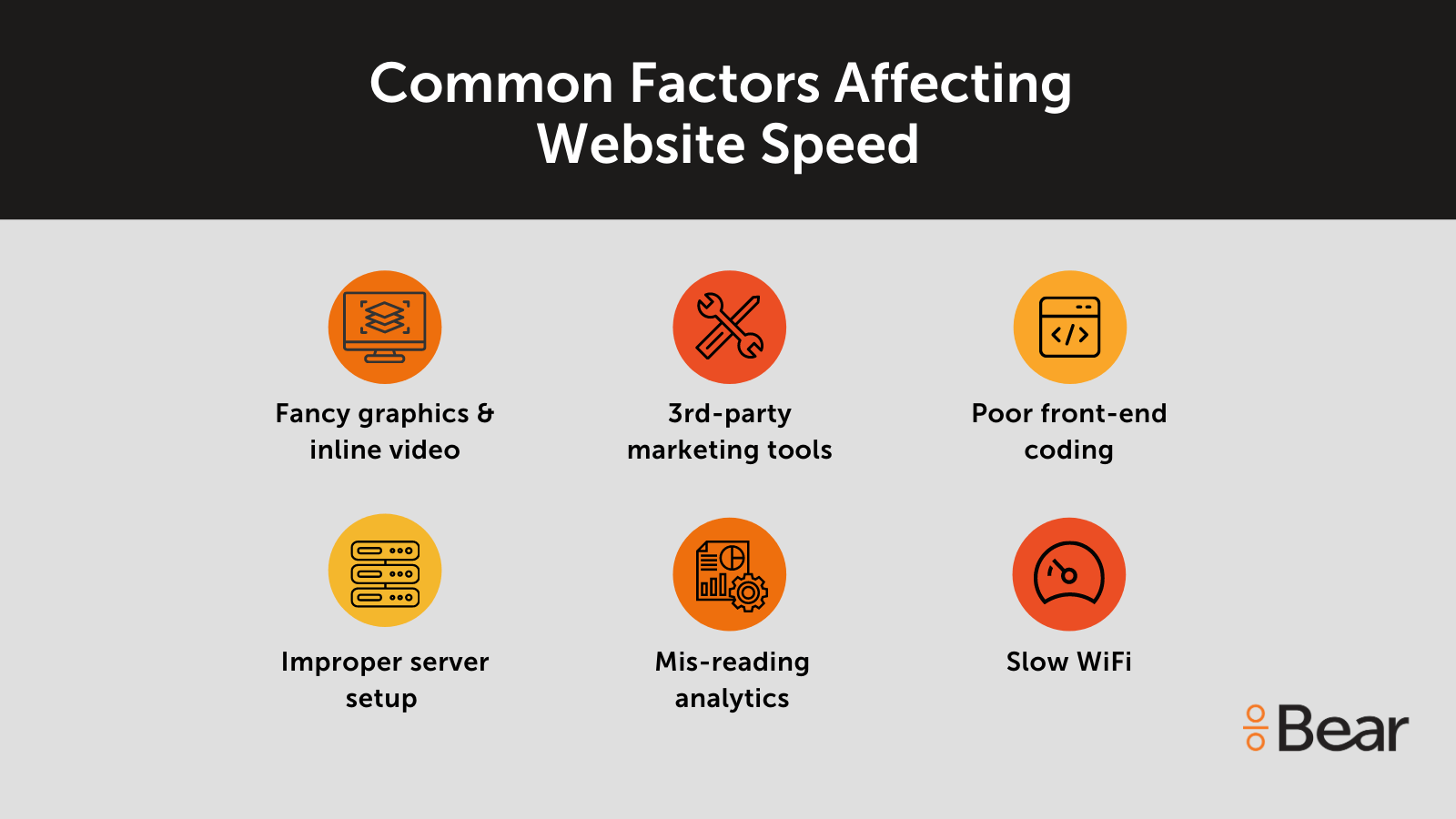A slow website affects customer happiness, increases abandonment, lowers brand experience, impacts SEO, frustrates site admins, and just kinda makes everything suck. We’ve been "under the hood" performance tuning websites for clients for years. In our Improving Website Performance Series, we'll help you establish a baseline for your site, review the key levers we look to for performance improvements, and point you in the right direction as you get started.
But first...
There’s a scene in the 2019 film Ford v Ferrari when Carrol Shelby (Matt Damon) tells Henry Ford II (Tracy Letts) that anyone can build the best car in the world, but what makes it the fastest is not the machine, it’s the right driver. The same can be said about website performance.
The parts needed to build a website—servers, code, content, networks—are readily available to any business and development team. But having the right team in place and assembling something that ensures everyone using your site has a wonderful experience—that’s all about the driver.
While it may not take long to make improvements towards a better site performance, hoping for a silver bullet solution is a bad place to start this journey. You’ll have several levers affecting site performance, those levers each have tradeoffs, and it can be an iterative process.
Establishing your baseline for performance
In order to love your website, it needs to meet baseline expectations for performance. There isn’t a hard-and-fast rule like “your pages should load in under three seconds,” instead an acceptable site speed is a bit more subjective than that.
Speed is the user’s perception of your website's load time.
Your website doesn’t need to be the fastest on the internet (this is especially true if you value a rich brand experience). So don’t make that your goal. But your website does need to perform well—hopefully better than well—to meet the baseline of customer expectations for performance.
We’ve seen performance concerns escalate into stressful situations for internal teams. A few seconds of page load time can become a highly contentious issue. It can cause real user frustration, abandonment of carts, and just a poor experience for your most important asset: your customers.
Establishing a shared vision for website performance within your team is the first step to improving your website for customers. Where does site performance fit in the big picture for your organization? There are oftentimes competing end goals that must be considered.
If you want the fastest site possible, model yours after minimalists like Google or Craigslist. Pure text, maybe one form field, hardly any graphics. (I have yet to meet a brand or marketing manager who could stomach that.) Or, are you willing to trade page load time for the brand-establishing background video looping on your homepage?

What causes a website to be slow?
- Fancy graphic design, full bleed images, and inline video all add to the page weight.
- Those amazing third-party marketing tools you add to your website inject their own code and dependencies, break caching, and slow down sites.
- Poor front-end coding can slow down your website.
- Improper server memory allocation, caching, and not using content delivery network (CDN) tools.
- Misunderstanding of data and analytics tools in an attempt to evaluate what’s going on.
- And sometimes… it’s just a slow day on the internet with bad WiFi.
We’ll dive into each of these causes and more in our Improving Website Performance Series:
- How to Measure Your Website Speed
- Core Web Vitals and Website Performance Impact on SEO
- Website Design Impacts on Performance: How Optimizing Images Can Help
- How Adding Marketing Technologies Will Affect Website Performance
- How Server and Network Speed Can Affect Website Performance
- What is Website Caching and Why is it Important to Marketers?
- Present Your Website Performance Findings with this Helpful Optimization Report Template
